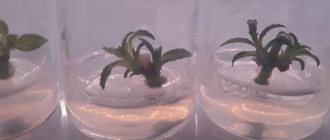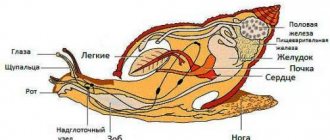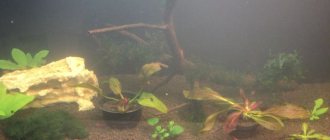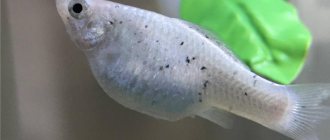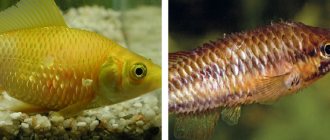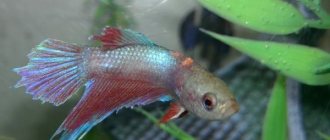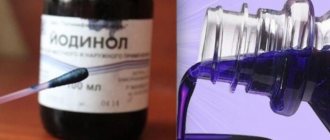Both experienced and novice aquarists are faced with the fact that unusual green dots—xenococus—appear on plant leaves and decorative objects. The main danger is associated with the fact that negative changes occur in the water system, which can harm the fish. If the owner of the aquarium does not pay attention to the growth of green dots, then this is fraught with a gradual deterioration of the situation.
The main danger of xenococcus is due to the fact that negative changes occur in the aquatic system that can harm the fish
Short description
All harmful spores end up in the aquarium along with food, plants and even fish. Under the influence of favorable conditions, they begin to actively reproduce, which is why they cover the soil, glass, and slow-growing plants, blocking their access to the necessary nutrients. Spores are especially dangerous during the period of time when the user has just set up the aquarium. This is due to the fact that during this period the metabolism of plants is at a very low level , which is why they may simply die.
As practice shows, the risk of developing harmful algae is significantly reduced if the aquarist has resorted to a dense method of planting fast-growing plants.
Camboba, hygrophila and peri-stofolia show good results. In the future, they can be replaced with slow-growing species.
Harmful xenococus spores enter the aquarium along with food, plants and even fish
Almost every aquarist has encountered a situation when dark green spots suddenly appeared in his favorite aquarium, which have a rigid structure and are difficult to remove with improvised means. Such manifestations can be single or multiple.
The situation is considered difficult when dark spots cover almost all stones, shells, decorative elements, as well as plant leaves. If a novice aquarist is faced with such a problem for the first time , then he definitely needs to know that he is dealing with xenococus algae.
Experts say that this algae can be found in almost every aquarium, since it is simply impossible to protect yourself from it if the aquatic environment contains a nutrient medium consisting of macro- and microelements. But the uncontrolled growth of xenococcus is fraught with the fact that once small spots will fill all the free space on plants and decorative objects. It is the plants that are under enormous threat, since mechanical control of xenococus in the aquarium is simply impossible.
The main task of the aquarist is to prevent excessive growth of spores.
Content
Where does the green coating come from? Effective practice How to remove green plaque? Live assistants
A fairly common problem faced by aquarists is a green coating on the walls of the aquarium, plant leaves, and stones. It does not pose a critical threat to the inhabitants of the aquarium, but it is unpleasant - the transparency of the glass and the appearance of the aquarium are affected.
An aquarium is a living world, and various algae develop in it. If a small green deposit forms in a balanced aquarium with clear water within a week or a week and a half, this is normal. If fouling occurs faster, the glass becomes cloudy in a couple of days - this means that the balance is somehow disturbed, and you need not only to remove the green coating in the aquarium, manually or using chemicals, but also to eliminate the reasons for its rapid formation.
Eliminating unwanted algae
Those who have studied aquariums know that there is some kind of confrontation between algae and fish . This phenomenon is especially noticeable in environments that are only a few days old (new aquarium).
Whoever takes root first in a new place will have a greater chance of survival. If harmful algae adapt first, they will quickly fill the entire surface of the plants and will not give them any opportunity to receive nutrients. And when this place is occupied by aquarium plants, they will quickly grow and thereby destroy the xenococus.
Adapted aquarium plants will quickly grow and thereby destroy xenococus
Such a natural struggle is observed only in an environment where green spaces receive all the necessary components and good lighting for life. But this situation is not observed in all aquariums. If conditions are far from ideal, then harmful algae come into play, which negatively affects the entire underwater world.
If the aquarium does not allow for the presence of algae due to large fish, the traditional lighting technique will come to the rescue.
Can you do it yourself?
Although there are many liquid and solid varieties available on the market, some people prefer to add potassium to their aquarium at home rather than using commercially prepared solutions. The classic recipe for fertilizer for a small glassed-in home pond involves combining water and potassium salt. For 110 g of salt take one liter of liquid. Sulfate or potassium sulfate is used as salt. In order for the chemical components to dissolve well, you need to heat the liquid to a temperature of 25 degrees. If the aquarium is 100 liters, you will need to add 10 ml of the prepared solution.
Characteristic signs of xenococus growth
In fact, determining the fact that this algae is present in the aquarium is not so difficult. It is characterized by its appearance in the form of green dots, which gradually spread throughout all elements of the tank, snags and even plants. If this process is not regulated, the xenococus will fill all objects in the aquarium.
Xenococcus is characterized by a manifestation in the form of green dots, which gradually spread throughout all elements of the tank
A surprising fact is that this algae does not affect those groups of plants that have a rapid growth phase and have long stems. But that part of the green spaces that grows very slowly and in the dark part of the aquarium suffers the most from this algae.
After a short period of time, small spots can combine into one large spot, the diameter of which can reach eight millimeters. In addition, the algae becomes rough and hard, making it very difficult to get rid of.
This problem can only be eliminated in a radical way, when all affected plants are simply removed from the aquarium.
Experts note that it is possible to get rid of xenococcus in an aquarium only if the problem is identified in time . Otherwise, the aquarium will gradually be affected by other types of algae: filamentous algae, Vietnamese algae, bacterial film, blackbeard. And we should expect more serious problems from them.
Features of feeding
You need to know that how to add potassium to an aquarium correctly depends on the characteristics of a particular home pond, as well as its inhabitants. Some owners prefer varieties of greens with powerful roots. If the owner has chosen just such forms, in order to fertilize them, you need to place the fertilizer in the soil area. The easiest way is to use store-bought tablets - there are those that contain only potassium, if they are combined formulations. It is necessary to choose special fertilizers for vegetation living in water. Otherwise, the feeding procedure will be ineffective or even harmful.
Development factors
Specialists conducted specific studies that showed that xenococus affects the aquarium where there is a lack of phosphorus. A lack of this element can lead to the fact that the growth of ordinary algae will be significantly reduced or completely stopped. In addition to this, a lack of phosphorus prevents plants from absorbing nitrogen, which causes harmful nitrates to accumulate in the aquarium. If you add good lighting to this, then you won’t have to wait long for harmful algae to appear.
Xenococus attacks the aquarium where there is a lack of phosphorus
Most often, an acute lack of phosphorus is observed in new aquariums 60 days after planting. To avoid such consequences, you need to apply microfertilizers in a timely manner or feed the fish more, since their food contains all the necessary components. If a lack of phosphorus is observed in old aquariums that are already fully equipped, then the main source of the problem may be caused by fertilizers. The aquarist may not be adding enough or the ratio of NO 3: PO 4 is not suitable for the underwater world. The only way out in this situation is to change the fertilizer manufacturer .
Studies have shown that plants stop growing if the level of carbon dioxide in the aquarium drops to a critical level - 5 mg/l. But this indicator is quite enough for the growth of algae.
If there is a good level of lighting in the aquarium, then the xenococus will develop extremely rapidly and will fill the entire bottom and even the walls of the container.
Basic recommendations
When the xenococus has just begun to grow and has not yet caused serious damage to the underwater environment, then it will be much easier to fight it. In this case, aquarists have provided several basic recommendations that have the necessary effectiveness. The following steps will help eliminate green dots:
- If shade-loving and light-loving plants were planted in the same aquarium, then the former should be darkened with the help of the latter.
- The lighting level needs to be adjusted. The length of daylight hours should be no more than 10 hours per day. As for the light intensity, this indicator must correspond to the species composition.
It is easier to fight xenococus when it has not yet grown - The aquarist must additionally stimulate the growth of higher plants, since they are the ones that suppress the growth of xenococcus. In this case, you can increase the number of plants, slightly reduce the number of fish, and also increase the lighting period to 12 hours. In addition, you need to clean the soil daily and change a tenth of the water.
- You can add essential cleaners to the aquarium (for example: Teodocsus snails and Ottocinculus affinis fish), which feed on harmful green algae, including xenococus.
- Apply fertilizers at the rate of 0.5 mg per 1 liter of water according to PO4. In some cases, the use of KN (PO4)2 and KN2PO4 is considered acceptable. It is worth noting that in this case the risks of imbalance increase, which is why it is better to use complex fertilizers.
- The aquarist can independently remove green dots from decorative objects, preventing them from gaining a foothold.
- Carry out regular water changes (30% weekly). Due to this, you can adjust the balance of microfertilizers, avoiding their excess.
You can fight xenococus with the help of shrimp or cleaner fish.
As practice shows, in most cases the listed actions are quite sufficient to effectively combat xenococus. But if the situation gets out of control, and harmful green dots fill all the plants, causing their growth to stop, then you need to resort to more radical methods.
In this case we are talking about algaecides. The huge advantage is that all green algae are very sensitive to such agents. The use of any drugs must be carried out in a certain dosage, which is always indicated in the instructions.
Do not forget that all algaecides are designed to eliminate the symptoms , but not the causes of the development of xenococcus. That is why it is necessary to initially carry out all the above steps in order to stabilize the condition of the underwater system and prevent the re-development of negative algae.
Alternative recipe
You can make a self-mix of potassium for the aquarium with the inclusion of additional ingredients that are beneficial for vegetation. One of the most popular options involves combining the following ingredients. First, boil 0.7 liters of distilled water, leave to cool slightly, after which magnesium sulfate (10 mg), citric acid (30 g), iron salt (10 g), copper sulfate (0.5 g) and zinc (0.6 g). The solution is infused for an hour, boric acid (one-third of a gram), potassium sulfate (9 g), “Tsitovit” (four copies), “Ferovit” (also four), vitamin B2 (a couple of ampoules) are added. The final step is the introduction of sulfuric acid. Dose – 20 ml. The last component is considered the most dangerous; you must carefully follow the rules for handling the substance.
As all the ingredients are combined, add distilled water so that the total volume is a liter. The drug is fully prepared and can be used to improve the nutritional quality of liquid in a home aquarium. This product should be applied every day. For a 50-liter container, the optimal dose is a milliliter.
Effective methods of control
Every aquarist should know effective methods of combating xenococus, which can suddenly appear in any aquarium. Failure to comply with basic requirements almost always leads to the fact that the ecosystem of the aquarium world simply dies. That is why every aquarist should have a multifunctional Sidex in his arsenal.
To use this product, you need to use a special activator, which is presented in the form of small particles, as well as a solution of glutaraldehyde.
To disinfect a tank infected with xenococus, it is necessary to select an individual concentration of Sidex.
It is also worth noting that experienced aquarists do not always approve of the use of Sidex by beginners. This trend is due to the fact that to disinfect a tank that is infected with xenococus, it is necessary to select an individual solution concentration. But those who have already encountered this tool are well aware of all its advantages:
- safe disinfection of fish;
- reliable disinfection of the entire aquarium, stones, decorative elements;
- guaranteed destruction of harmful fungi, spores and viral lesions.
It is important to remember that Sidex must be used with extreme caution, since exceeding the permissible dosage can provoke irreversible processes. To get rid of xenococcus on plants and not harm them, you need to adhere to the following proportion: 19 ml of solution is needed per hundred liters of aquarium water. Sidex must be added within 10 days. In some cases this period may be extended.
Features of different products
When choosing potassium sulfate suitable for an aquarium, as well as considering multicomponent fertilizers with potassium inclusions, it is worth paying attention to the technical features of different products. Some products are sold in ampoules. Their contents are intended for a specific volume of water. How big is indicated on the packaging. There is an alternative form of release - liquid in a large package. The owner measures the required amount from a large container and pours it into the aquarium as needed. It is important to strictly follow the dosage. If the concentration is exceeded, conditions may become unsuitable for the survival of vegetation and fish.
There are fertilizers in solid form. Specialized tablets for aquariums are on sale. They are quite convenient to use, but you need to take into account that each tablet is also designed for a specific volume of water. If the aquarium is larger or smaller than the specified size, the dosage must be adjusted. The instructions accompanying the product must provide detailed information about the rules for using the product.
Basic preventive measures
Simple recommendations from experts will help avoid the development of xenococcus and other harmful green algae. Each point was repeatedly checked by both experienced and novice aquarists, thanks to which the most effective preventive measures were determined. This list included the following factors:
- Maintaining optimal daylight hours. It is worth noting that this parameter largely depends on the type of plants planted.
- Choosing quality equipment for aquarium lighting. In this case, optimal performance must be taken into account.
- Replacing water. Every 10 days it is necessary to carry out a 20-30% water change. It is worth noting that it is best to use distilled water.
Maintaining the optimal length of daylight hours will help avoid the occurrence of xenococcus - Regular application of fertilizers and nutrients. The type of fertilizer used depends on the type of shady plants that are planted in the aquarium.
- Installation of aerators and filters. The choice of such equipment largely depends on what plants and fish live in the aquarium.
- Introduction to the created ecosystem of beneficial snails that eat harmful algae.
To prevent the development of xenococcus, each point must be carried out with a certain responsibility. In difficult situations, you can attract experienced aquarists who will help eliminate the existing problem. Experts always note that the condition of not only fish and plants, but also the entire underwater system often depends on compliance with the above rules. That is why the fight against xenococcus must be correct and timely.
Nuances of application
Most of the tablets on sale are universal fertilizer options that can be used to feed almost any aquatic vegetation. In addition to potassium, they contain iron and other ingredients important for the normal functioning of the flora.
Some forms of fertilizer need to be buried in the soil of the aquarium. Only in this way can beneficial ingredients be evenly distributed throughout the environment in which the plants live. The instructions describe at what depth the product should be applied. By following the established rules, the owner guarantees adequate nutrition to the roots of the vegetation.
